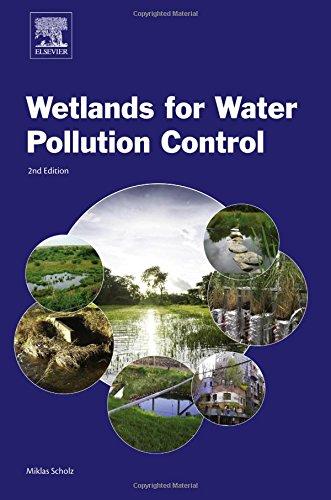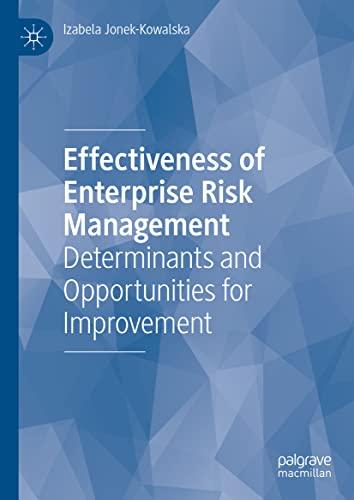Sustainability
Civil Engineering
Drainage Systems
FIGURE2 Overviewofresearchareasandtheircorrespondingrelativeimportanceandlinkages betweenthem.
recentyearsareasfollows:2009,13articles;2010,19articles;2011,13 articles;2012,21articles;2013,17articles; and2014,15articles.
Hepublishesregularlyinthefollowingjournalswithhighimpactfactors: BioresourceTechnology,BuildingandEnvironment,ConstructionandBuilding Materials,Desalination,EcologicalEngineering,EnvironmentalModelling& Software,EnvironmentalPollution,Industrial&EngineeringChemistry Research,JournalofChemicalTechnologyandBiotechnology,Journalof EnvironmentalManagement,LandscapeandUrbanPlanning,Scienceofthe TotalEnvironmentandWaterResearch
Prof.Scholzhastotalcitationsofmorethan2845(above2122citations since2010),resultinginanh-indexof28andani10-Indexof64.Prof.Scholz isEditor-in-Chiefof13journals,includingtheWebofScience-listedjournal Water(impactfactorsfor2014:1.428).Hehasmembershipexperienceon35 influentialeditorialboards.Prof.ScholzwasamemberoftheInstituteof EnvironmentalManagementandAssessment(IEMA)Councilbetween2008 and2015.
Miklashasacurrentlyactive(on-going)grantincomeofusually £270,000. Hisgrantincomeoveranypastsixyearsistypically £1,500,000.Thesefigures includeresearchandothergrants,aswellasconsultancy.
Hissustainablefloodretentionbasin(SFRB)conceptassessesthemultifunctionalityofalllargewaterbodies,withparticularreferencetotheirflood
Thetextbookisessentialforundergraduateandpostgraduatestudents,lecturers,andresearchersinthecivilandenvironmentalengineering,environmental science,agriculture,andecologicalfieldsofsustainablewatermanagement.It shouldbeusedasareferenceforthedesign,operation,andmanagementof wetlandsbyengineersandscientistsworkingforthewaterindustry,localauthorities,nongovernmentalorganizations,andgovernmentalbodies.Moreover, consultingengineersshouldbeabletoapplypracticaldesignrecommendations andtorefertoalargevarietyofpracticalinternationalcasestudies,including large-scalefieldstudies.
Thebasicscientificprinciplesoutlinedintherevisededitionshouldbeof interesttoallconcernedwiththebuiltenvironment,includingtownplanners, developers,engineeringtechnicians,agriculturalengineers,andpublichealth workers.Thebookiswrittenforawidereadership,butsufficienthotresearch topicsarealsoaddressedinninecompletelynewchapterstoguaranteealong shelf-lifeforthebook.
Solutionstopressingwaterqualityproblemsassociatedwithconstructed treatmentwetlands,integratedconstructedwetlands,farmconstructedwetlands andstormwaterponds,andothersustainablebiologicalfiltrationandtreatment technologieslinkedtopublichealthengineeringareexplained.Casestudytopics arediverse:wetlands,includingnaturalwetlandsandconstructedtreatment wetlands;sustainablewatermanagement,includingsustainabledrainagesystems;andspecificapplicationssuchaswetlandstreatinghydrocarbonandpiggerywastewater.Theresearchprojectsaremultidisciplinary,holistic, experimental,andmodeling-oriented.
Thebookispredominantlybasedonexperiencesgainedbytheauthorover thelast14years.Originalmaterialpublishedinarticlesinmorethan170highrankingjournalsandpresentedin200keyconferencepapershasbeenrevisited andanalyzed.Experiencetheauthorgainedasaneditorialboardmemberof morethan30relevantpeer-reviewedjournalsguaranteesthatthetextbook containssufficientmaterialthatfillsgapsinknowledgeandunderstanding,and thatitdocumentsthelatestcutting-edgeresearchinareassuchassustainable drainage.
Thebooktriestointegratenaturalandconstructedwetlandsandsustainable drainagetechniquesintotraditionalwaterandwastewatersystemsusedtotreat surfacerunoffandassociateddiffusepollution.Chapters1 4introducewater qualitymanagementandwaterandwastewatertreatmentfundamentalstothe inexperiencedreader.
Chapters5 9reviewpreliminaryandpredominantlyprimarytreatment unitsthatcanbecombinedwithwetlandsystems.Chapters10 15summarize predominantlysecondarybutalsotertiarytreatmenttechnologiesthatcanbe usedincombinationwithwetlandtechnologiesorasalternativesincases wherelandavailabilityisrestrictedduetocosts.UsuallynonessentialtraditionaltechnologiesarebrieflypresentedinChapters16and17forthereasonof completeness.
CommonAcronyms andAbbreviations
A Coefficient (unknownfunctionofvariousvariablesincluding rainfallintensityandinfiltrationrate)
A Cross-sectionofflowarea(m2)
Al Cross-sectionalareaoflysimeter(m2)
AEAICAD Aestheticandeducationalappreciationandinspirationfor culture,art,anddesign(%)
AFTW Aestheticfloodtreatmentwetland
ANN Artificialneuralnetwork
ANOVA Analysisofvariance
AS Activatedsludge
ATV-DVWK Germanabbreviationfor GermanAssociationforWater, WastewaterandWaste
Avg. Average(mean)
B Maximumexperimentaldepth(mm)withintheinfiltration basinduringanindividualstorm
BC Biologicalcontrol(%)
BMP Bestmanagementpractice
BMU Best-matchingunit
BOD Biochemicaloxygendemand(mg/l)(usuallyfivedays at 20 C)
BP Back-propagation
BP-MLL Back-propagationformultilabellearning
BRE BritishResearchEstablishment (company)
C Carbonorcombinedapproachorcontrolorchili
Ce Outflowconcentration (ofcontaminantinwetlandcell) (g/m)
Cf Contaminantconcentrationininfiltrationwater(g/m3)
C0 Inflowconcentration (ofcontaminantinwetlandcell) (g/m)
CBR Case-basedreasoning
CE Communityandenvironmentapproach
CFU Colony-formingunit
CIRIA (British) ConstructionIndustryResearchandInformation Association
COD Chemicaloxygendemand(mg/l)
CSS Carbonsequestrationandstorage(%)
xxxii CommonAcronymsandAbbreviations
SVM Supportvectormachine
T(ort) Infiltrationtime(s)ortemperature( C)
TAV Tourismandareavalue(%)
TE Topographicerror (usuallyin%)
TFRB Traditionalfloodretentionbasin
TOC Totalorganiccarbon(mg/l)
TS Totalsolids(mg/l)
UK UnitedKingdom
U-matrix Unifieddistancematrix
USA UnitedStatesofAmerica
UV Ultraviolet (light)
W West
WTW WissenschaftlichTechnischeWerkstatten (company)
X Variable (here,costunit)
X Domainofinstances
xi Aninstance i
Y Setoflabels
yi Label i
Z1 Factor (definedbytheBREmethod)
Z2 Growthfactor (definedbytheBREmethod)
G Biasparameterofafeed-forwardnetwork
D Symmetricdifferenceoftwosets
1.2WATERQUALITYSTANDARDSANDTREATMENT OBJECTIVES
Itiscommonlyagreedthattherearethreebasicobjectivesofwatertreatment:
1. Productionofwaterthatissafeforhumanconsumption; 2. Productionofwaterthatisappealingtothecustomer;and 3. Productionofwatertreatmentfacilitiesthatcanbeconstructedand operatedatareasonablecost.
Thefirstoftheseobjectivesimpliesthatthewaterisbiologicallysafefor humanconsumption.Ithasalreadybeenshownhowdifficultitistodetermine what“safe”actuallymeansinpractice.Aproperlydesignedplantisnota guaranteeofsafety,standardswillchange,andplantmanagementmustbe flexibletoensurecontinuedcompliance.
Thesecondbasicobjectiveofwatertreatmentistheproductionofwater thatisappealingtothecustomer.Ideally,appealingwaterisclearandcolorless,pleasanttotaste,odorless,andcool.Itshouldbenonstaining,noncorrosive,non-scale-forming,andreasonablysoft.Theconsumerisprincipally interestedinthequalityofthewaterdeliveredtothetap,notthequalityatthe treatmentplant.Therefore,storageanddistributionneedtobeaccomplished withoutaffectingthequalityofthewater;inotherwords,distributionsystems shouldbedesignedandoperatedtopreventbiologicalgrowth,corrosion,and contamination.
Thethirdbasicobjectiveofwatertreatmentisthatitcanbeaccomplished usingfacilitieswithreasonablecapitalandoperatingcosts.Variousalternativesinplantdesignshouldbeevaluatedforcost-effectivenessandwater qualityproduced.
Theobjectivesoutlinedhereneedtobeconvertedintostandardssothat properqualitycontrolmeasurescanbeused.Therearevariousdrinkingwater standards.Thekeyvariablesareasfollows:
l Organolepticparameters:color,turbidity,odor,andtaste;
l Physicalandchemicalparameters:temperature,pH,conductivity,dissolvedoxygen,dissolvedsolids,chlorides,sulfate,aluminum,potassium, silica,calcium,magnesium,sodium,alkalinity,hardness,andfreecarbon dioxide(CO2);
l Parametersconcerningundesirablesubstances:nitrate,ammonium,total organiccarbon(TOC),hydrogensulfide,phenols,dissolvedhydrocarbons, iron,manganese,suspendedsolids,andchlorinatedorganiccompounds otherthanpesticides;
l Parametersconcerningtoxicsubstancessuchasarsenic,mercury,lead,and pesticides;and
l Microbiologicalparameters:totalcoliforms,fecalcoliforms,fecalstreptococci,sulfite-reducingclostridium,andtotalbacterialcount.
Standardsusuallygivetwovalues:aguidelevel(GL)andamaximum admissibleconcentration(MAC).TheGListhevaluethatisconsidered satisfactoryandconstitutesatargetvalue.TheMACisthevaluethatthe correspondingconcentrationinthedistributedwatermustnotexceed.Treatmentmustbeprovidedwhentheconcentrationintherawwaterexceedsthe MAC.
Standardsalsospecifythemethods,frequencies,andnatureoftheanalysis. Fortotalhardnessandalkalinity,thestandardsspecifyminimumvaluestobe respectedwhenwaterundergoessoftening.
Moststandardsgroupsubstancesintofivecategories:
l Microbiological;
l Inorganicwithconsequencesonhealth;
l Organicwithconsequencesonhealth;
l Appearance;and
l Radioactivecomponents.
Oneofthemainsourcesofconfusionregardingwaterstandardsandtheir interpretationisthelackofanyclearindicationastohowthestandardwas derived.Thisresultsintheinterpretationofallstandardsas“healthstandards” bythepublicand,subsequently,inthedifficultyofassessingwhatshouldbe donebythewatersupplierifathresholdisexceeded.
Thisisparticularlytrueofdrinkingwaterqualitydirectivesbecause insufficientexplanationofthederivationoftheactualnumbersisoftengiven. Thereareeventhresholdsforvariablesregardedastoxicthatarebasedon politicalorotherconsiderations,andtheyarethereforeonlylooselybasedon science(e.g.,pesticides).Theuseofsuchapproachesisacceptableaslongas thereasoningbehindthemiscleartoall.
Internationalguidelinesareusuallyintendedtoenablegovernmentstouse themasabasisforstandards,takingintoaccountlocalconditions.Theyare intendedtobeprotectiveofpublichealth,andtheyshouldbeabsolutelyclear, evendowntodetailedscientificconsiderationssuchasthederivationofuncertaintyfactorsandtheroundingofnumbers.Itisthereforeincumbentonthe expertgroupstojustifytheirthinkingandpresentitopenlyforalltosee.Such adisciplineavoidsthe“fudging”ofissueswhilegivingtheimpressionof scientificprecision,anditcanonlybeofvalueinincreasingpublicconfidence intheresultingguidelines.
Itisclearthat,atpresent,standardsforwaterqualityareasfollows:
l Looselybasedonscience(althoughthesituationisimproving);
l Notstatic(thescienceofmonitoringaswellasourunderstandingofthe healthimplicationsofchronicexposureofmanycontaminantsare improving);and
l Importantinthequalitycontrolofpotablewater(forbothsupplierand consumer).
Concerningtheoutflowwaterqualityofmostwetlandsystems,standards eitherareunclearorarecurrentlybeingdeveloped.Thelocalenvironment regulatorusuallysetsstandardsforspecificwetlandsystemapplications.
1.3BIOCHEMICALOXYGENDEMAND
Whenwastewater,includingurbanrunoff,isdischargedintoawatercourse,it exertsapollutingloadonthatwaterbody.Microorganismspresentinthe naturalwaterandthewastewaterbreakdown(stabilize)theorganicmatter.In permittingdischargestowatercourses,theEnvironmentAgencyintheUK,for example,triestoensurethattheconditionsareaerobicsothatallotherlife formsintheriver(e.g.,fish)cancontinuetosurvive.Theearlyformsof wastewatertreatmentdevelopedareaerobic,andsothesimplestwayof estimatingthebiodegradabilityofawastewatersampleistoestimatethe amountofoxygenrequiredtostabilizethewaste.
Todeviseaneasyandsimplemethodofassessingtheoxygendemand,the followingconstituentsofaclosedsystemshouldbeconsidered:
l Air(inexcess);
l Asmallnumberofbacteria;and
l Afiniteamountofsubstrate(wasterepresentingfood).
Thefollowingphasesofbiologicalgrowthanddeclinecanbeidentifiedin suchasystem:
l Lagphase:Bacteriaareacclimatizingtosystemconditions,inparticular thesubstrate;verylittleincreaseinnumbers.
l Loggrowth:Bacteriaareacclimatized;foodisnotalimitingfactor;rapidly increasingpopulationofbacteria.
l Declininggrowth:Foodeventuallybecomeslimiting;declininggrowth rates.
l Endogenousrespiration:Asthesubstrateconcentrationbecomesdepleted, competitionincreases;bacteriastartconsumingdeadbacterialcellsand eventuallystartconsuminglivecells.
Itisasystemofthistypethatisusedtoassesstheoxygendemandof wastes,includingorganicmatterfromurbanrunoff.Thetestdevelopedfrom thissystemisthebiochemicaloxygendemand(BOD)test.
TheBODtestiscarriedoutasfollows:aknownquantityofawastewater sample(suitablydilutedwithpreparedwater)isplacedina300-mlBOD bottle.Thepreparedwaterissaturatedwithdissolvedoxygen(DO),andnutrientsandabufferareadded.Thebottlesarethensealedairtight.Thebottles aresubsequentlyincubatedat20 Cinthedark(Clescerietal.,1998).
Initially,thebacteriabreakdownthecarbon-basedmolecules.Inpractice,a secondoxygendemandisobserved.Inthecaseofrawsewage,thisstage usuallybecomesapparentafterapproximately8daysofincubationat20 C.
Thissecondstageisduetotheoxidationofammoniapresentinthewaste;this iscallednitrification.Alargepercentageofthenitrogeninthewastewater originatesfromproteins;theproteinmoleculesaredegradedtorelease ammonia.Theoxidationprocessisdescribedin Eqs.(1.3.1)and(1.3.2):
Nitrificationconsumesasignificantamountofoxygensothatthetotal demandfornitrificationisoftencomparablewiththecarbonaceousdemand. Nitrificationalsogeneratesprotons(Hþ ions),whichincreasetheacidity(pH) ofthewaste.
Traditionally,theBODtestiscarriedoutfor5days;theresultingoxygen demandisreferredtoastheBOD5.TheBODiscalculatedasfollows (Eqs.(1.3.3)and(1.3.4)):
ðmg=lÞ¼ InitialDOinbottle
where:
Dilutionratio ¼ Volumeofwastewater VolumeofBODbottle
Inpractice,thetestisoftenmodifiedslightlyinthataquantityofseed microorganismsareaddedtotheBODbottletoovercometheinitiallag period.Inthisvariant,theBODiscalculatedfrom Eq.(1.3.5):
where:
D1 ¼ dissolvedoxygeninitiallyinseedandwastebottle;
D2 ¼ dissolvedoxygenattimeTinseedandwastebottle; B1 ¼ dissolvedoxygeninitiallyinseed-onlybottle; B2 ¼ dissolvedoxygenattimeTinseed-onlybottle; f ¼ ratioofseedvolumeinseededwastewatertoseedvolumeintheBOD testonseedonly;and DR ¼ dilutionratio.
Additionalbottlesareincubated.Thesecontainonlyseedmicroorganisms anddilutionwatertogettheBODoftheseed,whichisthenremovedfromthe BODobtainedforwasteandseed.
However,theBODtesthastwomajordisadvantages:ittakes5daysto obtainthestandardtestresult,andtheresultscanbeaffectedbytheprocessof nitrification(seeabove).Therefore,anitrificationinhibitorisoftenused (Chapter24).
2NH4
BOD
BOD ¼ ðD1 D2 Þ f ðB1 B2 Þ DR (1.3.5)
l Lime(burntCaO;slakedCa(OH)2);and
l Polyelectrolytes(long-chainorganicmoleculesnormallyusedinconjunctionwithaconventionalcoagulant).
Forthecoagulanttofunctionefficiently,itmustberapidlyanduniformly mixedthroughtherawwater.Thisusuallytakesplaceinahigh-shear(turbulent) environmentsuchasoneinducedbyahydraulicjump(low-costoption),a pump,ajetmixer,orapropellermixer.
Afterthecoagulantisuniformlydistributedinthewater,itrequirestimeto reactwiththecolloid,andthenfurthertime(andgentleagitation)topromote thegrowth(agglomeration)ofsettleablematerial(flocks).Thisisgenerally accomplishedeitherinatankwithpaddles(mechanicalmixing)orthrougha serpentinebaffledtank(hydraulicmixing).Onceflowsofasettleablesizehave formed,theyareremovedusuallybysedimentation(sometimesbyflotation).
IncountriessuchastheUKandIreland,developmentsinthe1940sledto theintroductionofthesludgeblanketclarifier(Chapter8).Thisisasingleunit thatencompassesrapidmixing,flocculation,andsettling.
Toremoveeithersolidscarriedoverfromsettlingtanksand/orany uncoagulatedmaterial(organicorinorganic),asandbedfilterisprovided.The waterflowsdownwardsthroughthebed,andtheimpuritiesareremovedby attachmenttothesandgrains.Thesandgrainsthereforerequireperiodic cleaning.Thefrequencyofcleaningdependsonthetypeoffilterused.The twocommonlyusedtypesarethefollowing(Chapters10and11):
l Slowsandfilter(slowloadingrate:approximatelyone-tenthofthatfora rapidgravitysandfilter)and
l Rapidgravitysandfilter(highloadingrate).
Sometimesfluorideisaddedtothewatertoreducetheincidenceofdental caries.Thisisaprocessthatprovokespublicdebate.IntheUnitedStatesand UK,chlorineisusuallyaddedtothewatertodisinfectit(Chapter19).It followsthatthewaterisbacteriologicallysafewhenitleavesthetreatment works,andexcesschlorineisaddedtoprotectthewaterfromcontamination duringthedistributionprocess.
Thereareseveralothercommonlyusedprocesses.Theirusagedependson thenatureoftherawwater.Aircanbeintroducedtothewatertooxidize impurities(e.g.,iron,manganese,orchemicalcompoundsaffectingthetasteof water).pHcontrolisacommonprocesssincemanyofthechemicaltreatment processesarepHdependent.Softeningreducesthehardnessand/oralkalinity ofwatertoimproveitsaestheticacceptability.Thisisacomplexchemical processdependingonthenatureofboththeanion ðHCO3 ; CO 2 3 ; orOH Þ andthecation(Ca2þ orMg2þ).
2.3BASICWATERCHEMISTRY
ThemostimportantchemicalvariablesofrawwaterareusuallytakenaspH andalkalinity.Alkalinityconsistsofthosechemicalspeciesthatcanneutralize
acid.Inotherwords,thesespeciesallowthewatertoresistchangesandprovide bufferingcapacity.Themajorconstituentsofalkalinityarethehydroxyl(OH ), carbonate ðCO 2 3 Þ,andbicarbonate ðHCO3 Þ ions.Therelativequantitiesof eachareafunctionofpH.
NosignificantconcentrationofhydroxylionsexistsbelowpH10,andno significantcarbonateconcentrationcanbedetectedbelowpH8.5.Formost waters,alkalinitythusconsistsofthebicarbonateion.Theotherspeciesmay beformedinthetreatmentprocess.Thebicarbonateandcarbonateionsinthe waterresultfromthedissolutionofcarbonaterocks.
ThepHisameasureofthefreehydrogenionconcentrationinwater. Water,andotherchemicalsinsolution,willionizetoagreaterorlesserdegree. Theionizationreactionisgivenin Eq.(2.3.1).
Inneutralsolutions,the[OH ]activityisequaltothe[Hþ]activity.Hence, thepHandpOH(ameasureofalkalinity)arebothequalandhavethe numericalvalueof7.Anincreaseinacidity,forexample,leadstohigher valuesof[Hþ],thusloweringthepH.
Thevariouschemicalreactionsthatoccurinnaturalwatersandinprocessed wateraregenerallyconsideredtooccurindilutesolutions.Thispermitstheuse ofsimplifiedequilibriumequationsinwhichmolarconcentrationsareconsideredtobeequaltochemicalactivities.
Theassumptionofdiluteconditionsisnotalwaysjustified,buttheerror introducedbythesimplificationisnogreaterthantheerrorthatmightbe introducedbycompetingreactionswithspeciesthatarenotnormallymeasured inwatertreatment.
Concentrationsofdifferentchemicalspeciesinwatermaybeexpressedin molesperliter,inequivalentsperliter,orinmassperunitvolume(typically, mg/l).Theequivalentofaspeciesisitsmolecularweightdividedbythenet valenceorbythenetchangeinvalenceinthecaseofoxidationandreduction reactions.
Thenumberofequivalentsperliter(normality)istheconcentration dividedbytheequivalentweight.Thenumberofmolesperliteriscalledthe molarity.
H2 O 5 Hþ þ OH
(2.3.1)
stages.However,innormalpractice,theworksareorganizedsuchthatallsludge iscollectedcentrally.
Wetlandsystemscanbedesignedforeachengineeringstageandforsludge treatment.However,constructedtreatmentwetlands(fordefinitions,referto Section20.2)areusuallyappliedforsecondaryortertiarytreatmentstages. Wetlandsintegratedinsustainabledrainagesystems(SuDS;previouslycalled sustainableurbandrainagesystems(SUDS))arefrequentlyusedforpreliminaryandprimarytreatmentpurposes.Urbanrunoffrequiresfulltreatment, whichisusuallynotthecaseinpractice,unlessforcombinedsewersystems andminorstorms.













